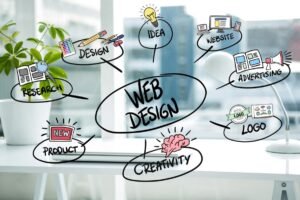Software development has come a long way since its inception. From the early days of the Waterfall model to the emergence of Agile methodologies and beyond, the evolution of software development methodologies has transformed the way we build, deploy, and manage software. In this article, we’ll take a journey through the various stages of this evolution and explore the advantages and challenges each model presents.
1. The Waterfall Model
Key Characteristics:
The Waterfall model, originating in the 1950s and popular in the 1970s, is a linear and sequential approach to software development. It consists of distinct phases, such as requirements, design, implementation, testing, deployment, and maintenance, each of which must be completed before the next phase begins.
Advantages:
- Clear and structured process.
- Well-documented requirements.
- Suitable for projects with stable requirements.
Challenges:
- Limited adaptability to changing requirements.
- Lengthy development cycles.
- Risk of delivering a product that doesn’t meet evolving user needs.
2. The Agile Manifesto
Key Characteristics:
The Agile Manifesto, born in the early 2000s, introduced a new era of software development focused on flexibility and customer collaboration. Agile methodologies prioritize iterative development, continuous feedback, and the ability to adapt to change throughout the project.
Advantages:
- Faster time-to-market.
- Improved customer satisfaction.
- Greater adaptability to changing requirements.
- Enhanced collaboration among development teams.
Challenges:
- Requires a cultural shift within organizations.
- Frequent iterations can lead to scope creep if not managed well.
3. Scrum, Kanban, and Lean Development
Key Characteristics:
- Scrum: A framework that divides work into fixed-length iterations called sprints, each ending with a potentially shippable product increment.
- Kanban: A visual process management system that focuses on continuous delivery, limiting work in progress, and improving efficiency.
- Lean Development: Draws inspiration from lean manufacturing, emphasizing efficiency, reducing waste, and improving the development process.
Advantages:
- Streamlined development processes.
- Improved visibility and efficiency.
- Better management of work in progress.
Challenges:
- Requires training and cultural adaptation.
- Complex implementation in large organizations.
4. DevOps and Continuous Integration/Continuous Deployment (CI/CD)
Key Characteristics:
DevOps brings development and operations teams together to automate and streamline the software delivery and deployment process. CI/CD pipelines are a central component of DevOps, enabling continuous integration, testing, and deployment.
Advantages:
- Faster and more reliable software delivery.
- Continuous feedback and improvement.
- Improved collaboration between development and operations teams.
Challenges:
- Cultural resistance within organizations.
- Complex implementation and management of CI/CD pipelines.
5. Modern Trends: Microservices, Serverless, and NoOps
Key Characteristics:
- Microservices: Decomposing applications into smaller, independently deployable services.
- Serverless: Running code without managing infrastructure, paying only for what is used.
- NoOps: The concept of reducing operational responsibilities through automation and cloud services.
Advantages:
- Scalability and flexibility.
- Cost-effective resource usage.
- Reduced operational overhead.
Challenges:
- Complex architectural design.
- Monitoring and managing distributed systems.
Conclusion
The evolution of software development methodologies reflects the industry’s constant quest for greater efficiency, flexibility, and responsiveness. As technology and user demands continue to evolve, so too will the methods by which software is conceived, developed, and delivered.
Ultimately, the choice of a software development methodology should align with the specific needs of a project, the organization’s culture, and its capacity to adapt to change. With an ever-expanding toolkit of methodologies and best practices, developers and organizations have the opportunity to harness the full potential of technology and deliver software that meets the demands of the modern world.
The journey from Waterfall to Agile and beyond is a testament to the adaptability and innovation of the software development community, and it’s a journey that will undoubtedly continue to evolve in the years to come.



